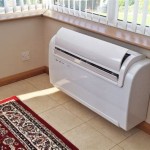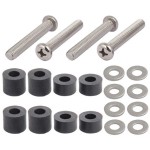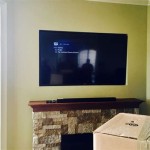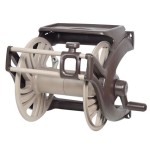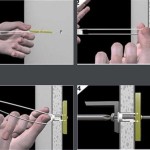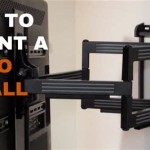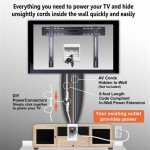Wall Mounted Home Theater Speakers: A Comprehensive Guide
Wall mounted home theater speakers offer a compelling blend of aesthetics and functionality, making them a popular choice for modern home entertainment setups. They provide immersive audio experiences without the visual clutter often associated with traditional freestanding speaker systems. This approach to home theater design offers solutions for space constraints and allows for a clean, streamlined look that complements contemporary interior design schemes. This article explores the various aspects of wall mounted home theater speakers, including their types, advantages, installation considerations, and factors to consider when making a purchase.
The primary purpose of a home theater system is to recreate the cinematic experience within the confines of a residential setting. Speakers are fundamental to achieving this goal, delivering the sound effects, dialogue, and musical score that contribute to the overall immersive effect. Wall mounted speakers, in particular, allow for precise placement, optimizing sound projection and creating a more realistic and engaging audio landscape. This is crucial for accurately reproducing the spatial cues present in film soundtracks, allowing viewers to perceive the direction and movement of sounds within the virtual environment.
Types of Wall Mounted Home Theater Speakers
The market offers a diverse range of wall mounted home theater speakers, each designed with specific functionalities and acoustic properties in mind. Understanding these different types is essential for selecting the appropriate speakers for a particular home theater setup.
Front Speakers (Left, Center, Right): These speakers are responsible for delivering the majority of the dialogue, music, and sound effects that originate from the front of the screen. The left and right speakers create a stereo image, while the center speaker anchors the dialogue, ensuring that it is clear and focused, regardless of the viewer's seating position. Wall mounted front speakers are typically placed at ear level when seated and equidistant from the listening position to ensure optimal sound staging.
Surround Speakers (Left Surround, Right Surround, Rear Surrounds): These speakers create the immersive surround sound experience by reproducing ambient sounds, environmental effects, and directional cues that place the viewer within the virtual environment. Surround speakers are usually positioned to the sides and rear of the listening area, often slightly above ear level to create a sense of spaciousness. In 5.1 or 7.1 systems, they are positioned strategically to create a realistic sense of envelopment.
Dolby Atmos Height Speakers: For advanced home theater systems that support Dolby Atmos or other object-based audio formats, height speakers are used to deliver sound from above, adding another dimension to the soundstage. Wall mounted height speakers can be mounted high on the front wall or on the ceiling, specifically designed to reflect sound off the ceiling or directly projecting it downwards. These speakers enhance the sense of realism and immersion, making the soundscape more dynamic and engaging.
On-Wall Speakers: These are specifically designed to be mounted directly onto the wall surface. They are typically slim and aesthetically pleasing, blending seamlessly with the surrounding decor. On-wall speakers offer a convenient and space-saving solution, making them suitable for smaller rooms or areas where a minimalist look is desired. They usually feature integrated mounting brackets for easy installation.
In-Wall Speakers: These speakers are recessed into the wall cavity, leaving only the speaker grille visible. In-wall speakers offer an even more discreet appearance than on-wall speakers, providing a clean and uncluttered aesthetic. Installation requires cutting into the wall and running speaker wires within the wall cavity. They are best suited for new construction or renovation projects, where the necessary wiring and structural modifications can be easily implemented.
Advantages of Wall Mounted Home Theater Speakers
Wall mounted home theater speakers offer several advantages over traditional freestanding speaker systems, making them an attractive option for many homeowners.
Space Saving: One of the most significant benefits of wall mounted speakers is their space-saving design. By mounting the speakers on the wall, floor space is freed up, making the room feel less cluttered and more spacious. This is particularly beneficial in smaller rooms or apartments where space is at a premium. The streamlined appearance of wall mounted speakers also contributes to a more minimalist and modern aesthetic.
Improved Aesthetics: Wall mounted speakers can enhance the overall aesthetics of a room by blending seamlessly with the surrounding decor. Their sleek and unobtrusive design allows them to integrate into the existing interior design scheme without drawing undue attention. This is especially true for in-wall speakers, which are virtually invisible once installed. The ability to conceal speaker wires within the wall further contributes to a cleaner and more organized look.
Optimized Sound Placement: Wall mounted speakers allow for precise placement, enabling optimal sound projection and creating a more immersive audio experience. By mounting the speakers at ear level or slightly above, the sound is directed towards the listening area, minimizing reflections and maximizing clarity. This is crucial for accurately reproducing the spatial cues present in film soundtracks and creating a realistic sense of envelopment. The ability to adjust the angle of the speakers further refines the soundstage, ensuring that the audio is properly balanced and focused.
Enhanced Safety: Wall mounted speakers can improve safety by reducing the risk of tripping hazards associated with freestanding speakers and speaker wires. This is particularly important in households with young children or pets. By keeping the speakers and wires out of reach, the potential for accidents is minimized. Wall mounting also protects the speakers from accidental damage caused by bumps or knocks.
Key Considerations for Installation
Proper installation is crucial for maximizing the performance and longevity of wall mounted home theater speakers. Several factors must be considered during the installation process to ensure optimal sound quality and a secure and aesthetically pleasing result.
Wall Structure and Material: The type of wall material (e.g., drywall, plaster, brick) will determine the appropriate mounting hardware and techniques required. Drywall, while common, often necessitates the use of wall anchors to provide sufficient support for the weight of the speakers. Brick or concrete walls require specialized drill bits and mounting hardware designed for masonry. It's essential to consult with a professional if unsure about the structural integrity of the wall or the appropriate installation methods.
Speaker Wire Management: Running speaker wires within the wall cavity is highly recommended for a clean and professional look. This requires planning the wire routes in advance and ensuring that the wires are properly insulated and compliant with local electrical codes. Wall plates with speaker terminals provide a convenient and aesthetically pleasing way to connect the speakers to the amplifier or receiver. If running wires within the wall is not feasible, consider using paintable wire covers to conceal the wires and minimize their visual impact.
Speaker Placement and Angling: Accurate speaker placement is essential for optimal sound reproduction. The speakers should be positioned according to the recommended guidelines for the specific surround sound format being used (e.g., 5.1, 7.1, Dolby Atmos). The distance between the speakers and the listening position, as well as the angle of the speakers, should be carefully adjusted to create a balanced and immersive soundstage. Use a laser level and measuring tape to ensure accurate and consistent placement.
Acoustic Treatment: The acoustics of the room can significantly impact the performance of the speakers. Hard surfaces, such as walls and floors, can reflect sound waves, causing unwanted echoes and reverberations. Adding acoustic treatment, such as acoustic panels, bass traps, and diffusers, can help to absorb or diffuse these reflections, improving sound clarity and reducing distortion. Strategic placement of acoustic treatment can significantly enhance the overall listening experience.
Professional Installation: While DIY installation is possible, professional installation is recommended, especially for complex systems or when dealing with in-wall speakers or running wires within the wall. Professional installers have the expertise and tools necessary to ensure a safe, accurate, and aesthetically pleasing installation. They can also provide valuable advice on speaker placement, wiring, and acoustic treatment.
When choosing wall-mounted home theater speakers, consider several factors: the size of the room, the desired sound quality, the available budget, and the overall aesthetic. Research different brands and models, read reviews, and compare specifications to find the best speakers for the needs. Proper planning and execution are essential for maximizing the performance and enjoyment of a wall mounted home theater system.

Home Theater Speaker Wall Mounts Why You Need Them For Your Surround Sound Speakers Youhangit

Best In Wall And Ceiling Surround Sound Systems For 2024
How To Make Surround Sound Work In An Apartment Audioholics

Wall Mount Speaker Snw313 Lcr By Garvan Acoustic

Do Wall Mounted Speakers Work In An Atmos Setup Home Theater Surround Sound

Focal On Wall Speakers The Next Best Thing To In Techhive

In Wall Speakers For Surround Sound And A Clutter Free Home Theatre Times Of India

When To Wall Mount Speakers The Teufel Audio Blog

5 Best Wall Mount Home Theater Speakers In India Cool Walls

On Wall Speaker Reviews Sound Vision

